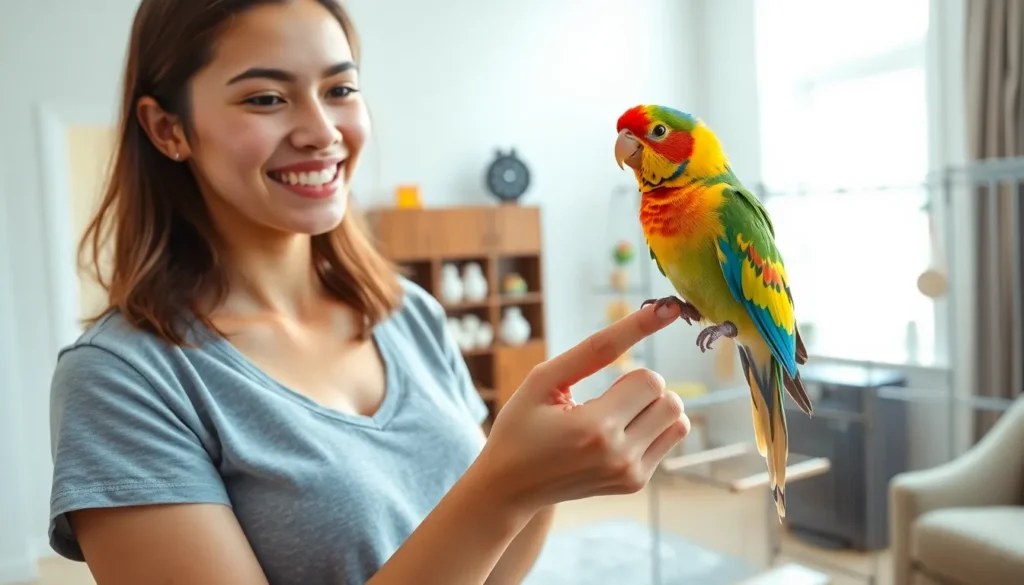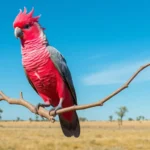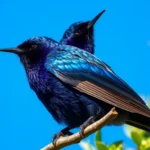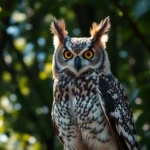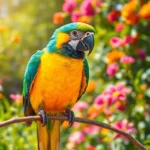Birds make incredible companions that bring joy and wonder into our homes every single day. Whether you’re drawn to the vibrant colors of a parrot or the gentle chirping of a canary these feathered friends offer unique personalities and endless entertainment that traditional pets simply can’t match.
We’ve discovered that bird ownership isn’t just about having a pet – it’s about welcoming an intelligent social creature into your family. From their ability to learn words and tricks to their fascinating social behaviors birds create bonds with their owners that last for decades. They’re perfect for apartment living and require less space than dogs while still providing the companionship we all crave.
Choosing the right bird for your lifestyle can transform your daily routine in the most delightful ways. We’ll guide you through everything you need to know about selecting caring for and building a lasting relationship with your new feathered family member.
What Makes Birds Great Pets
Birds offer exceptional companionship through their remarkable intelligence and social nature. These feathered friends display problem-solving abilities that rival those of young children, with species like African Grey parrots demonstrating cognitive skills equivalent to a 5-year-old human. Communication becomes a delightful experience as many birds learn to mimic words, sounds, and even entire phrases from their owners.
Space efficiency makes birds ideal for modern living situations. Unlike dogs or cats, birds thrive in vertical spaces and don’t require large floor areas for exercise. A properly sized cage measuring 24x24x30 inches accommodates most medium-sized birds comfortably while fitting into apartments and small homes.
Long lifespans create lasting bonds between birds and their families. Cockatiels live 15-25 years on average, while larger parrots can reach 50-80 years, providing decades of companionship. This longevity allows deep relationships to develop over time, with birds often becoming integral family members across generations.
Low maintenance requirements appeal to busy pet owners. Birds don’t need daily walks, litter box changes, or frequent grooming sessions. Daily feeding takes 10-15 minutes, and cage cleaning requires only 20-30 minutes weekly for most species.
Entertainment value exceeds expectations as birds engage in playful behaviors throughout the day. They perform acrobatic tricks, solve puzzle toys, and interact with mirrors or bells. Many species dance to music, creating amusing displays that bring laughter to households.
Emotional benefits include stress reduction and companionship for people of all ages. Studies show that bird ownership decreases cortisol levels by 12% and provides therapeutic benefits for elderly individuals and those with limited mobility. Birds respond to their owner’s moods and often provide comfort during difficult times.
Popular Bird Pet Species
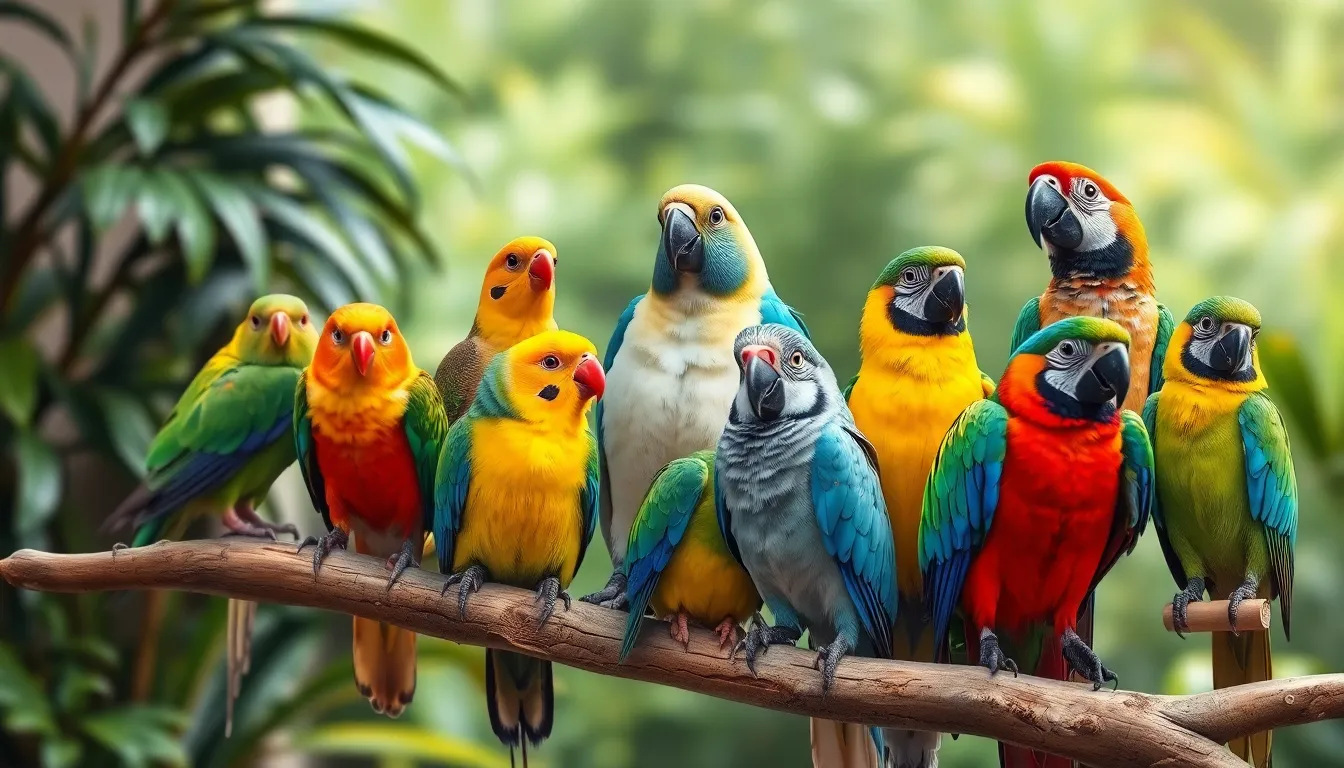
We’ve explored the many benefits of bird companionship, and now it’s time to discover which species make the best feathered friends for different lifestyles. Each bird species offers unique characteristics that appeal to various experience levels and living situations.
Small Birds for Beginners
Budgerigars represent the perfect starting point for new bird owners, measuring 7 inches long and living 5-10 years with proper care. These colorful parakeets cost $10-30 and adapt easily to apartment living while displaying playful personalities that entertain households daily.
Cockatiels captivate owners with their distinctive head crests and whistling abilities, growing 12-13 inches long and living 15-25 years. Their gentle nature makes them excellent family birds, particularly around children who enjoy their melodic songs and head bobbing behaviors.
Canaries excel as low maintenance companions that require minimal handling while providing beautiful songs throughout the day. Males produce the most elaborate melodies during breeding season, and their 4-5 inch size fits perfectly in smaller homes where space matters.
Lovebirds bond strongly with their owners even though their 5-7 inch size, displaying vibrant colors in combinations like peach faced, masked, and Fischer’s varieties. These energetic birds live 10-15 years and thrive when given plenty of toys for mental stimulation.
Medium-Sized Companion Birds
Conures bring exceptional personality to households through their playful antics and moderate talking ability, with species like Sun Conures and Green Cheek Conures measuring 10-12 inches long. Their 20-30 year lifespan allows for deep relationships, though their loud calls require consideration in apartment settings.
Cockatoos demonstrate remarkable intelligence and affection toward their families, with Goffin’s Cockatoos and Umbrella Cockatoos standing 12-18 inches tall. These birds live 60-100 years and demand important social interaction, making them ideal for experienced owners who appreciate their emotional depth.
Caiques charm families with their acrobatic abilities and clown like behaviors, measuring 9-10 inches and living 20-30 years. Their high energy levels require extensive playtime and mental challenges through puzzle toys and foraging activities.
Quaker Parrots showcase impressive talking abilities while maintaining manageable 11-12 inch sizes that suit various living spaces. These intelligent birds live 20-30 years and often develop vocabularies exceeding 100 words when properly socialized.
Large Parrot Species
African Grey Parrots rank among the most intelligent bird species, demonstrating cognitive abilities comparable to 5 year old children and developing vocabularies reaching 1,000 words. These 12-14 inch parrots live 50-80 years and require experienced owners who understand their complex emotional needs.
Amazon Parrots captivate households with their vibrant green plumage and exceptional talking skills, with species like Blue Fronted and Yellow Crowned Amazons measuring 14-16 inches. Their 50-80 year lifespan and bold personalities make them lifetime companions for dedicated bird enthusiasts.
Macaws represent the ultimate bird pet experience through their stunning 30-36 inch wingspans and remarkable intelligence that rivals young children. Blue and Gold Macaws and Scarlet Macaws live 60-100 years, requiring spacious environments and owners prepared for decades of commitment.
Eclectus Parrots offer unique sexual dimorphism where males display bright green coloring while females show vibrant red and purple plumage. These 14-inch birds live 30-50 years and excel as talking companions when provided consistent training and social interaction.
Essential Bird Pet Care Requirements
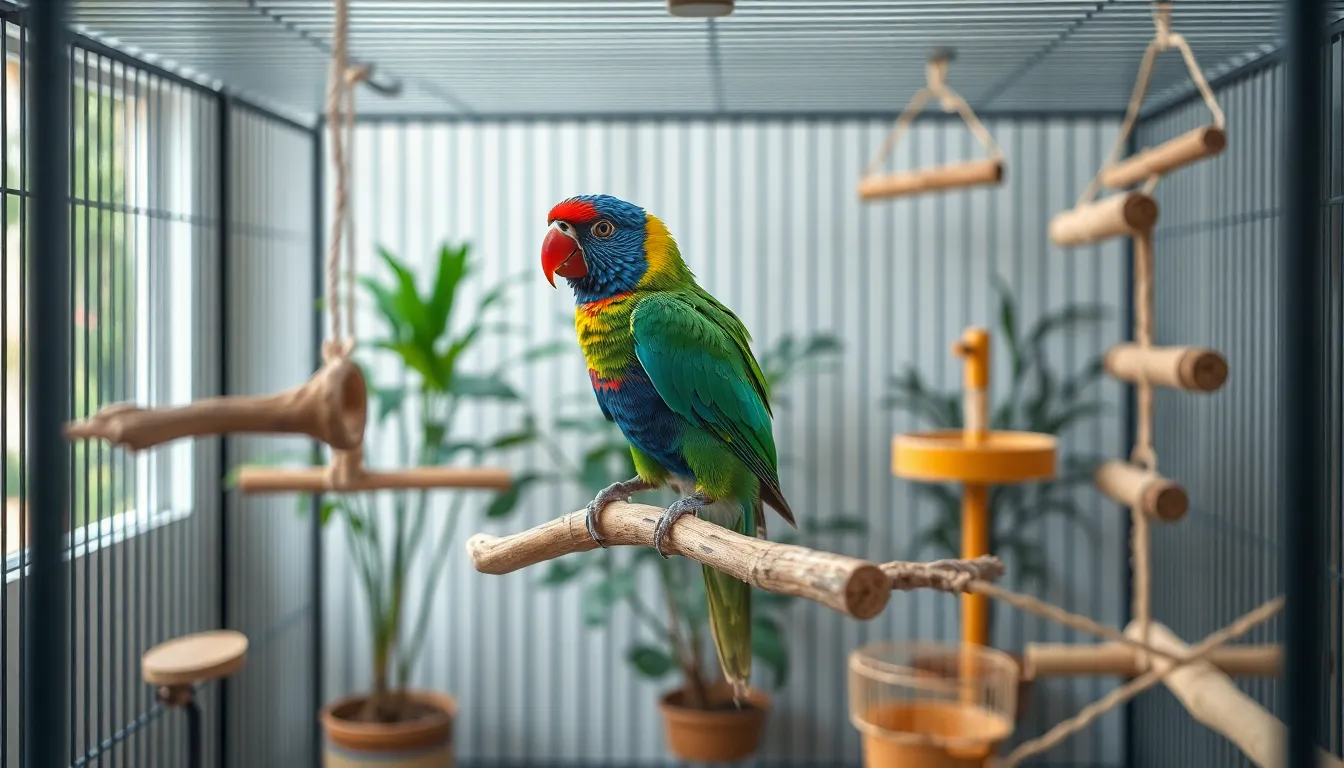
Bird pet care success depends on meeting three fundamental needs that directly impact your feathered companion’s health and happiness. Understanding these core requirements ensures your bird thrives in its new home environment.
Housing and Cage Setup
Cage dimensions matter more than most bird owners realize. We recommend selecting a cage that’s twice your bird’s wingspan in width and 1.5 times their height in vertical space. Small birds like budgerigars require cages measuring at least 18 x 18 x 24 inches while larger parrots need enclosures spanning 36 x 24 x 48 inches or more.
Bar spacing prevents injury and escape attempts when properly sized. Cockatiels thrive with 5/8-inch bar spacing while budgerigars need 1/2-inch gaps. Larger parrots require 3/4-inch to 1-inch spacing depending on their species size.
Perch variety promotes healthy feet and prevents arthritis. Natural wood branches from apple manzanita or willow trees offer different diameters and textures. Rope perches provide soft landing spots while mineral perches help maintain nail length naturally.
Cage placement affects your bird’s stress levels significantly. Position the enclosure against a wall in a room with moderate traffic. Avoid kitchens due to cooking fumes and bathrooms because of humidity fluctuations.
Essential accessories include multiple feeding stations food bowls and water containers. Stainless steel or ceramic dishes resist bacteria growth better than plastic alternatives. Cuttlebone and mineral blocks provide calcium supplementation for egg-laying females and growing birds.
Diet and Nutrition
High-quality pellets form the foundation of optimal bird nutrition. We recommend pellets comprising 75-80% of your bird’s daily food intake. Brands like Harrison’s Roudybush and Zupreem offer species-exact formulations that meet nutritional requirements without artificial colors or preservatives.
Fresh vegetables provide essential vitamins and minerals that pellets alone cannot deliver. Dark leafy greens like kale spinach and collard greens contain vitamin A and calcium. Orange vegetables including carrots sweet potatoes and bell peppers supply beta-carotene for immune system support.
Fruits serve as healthy treats when offered in moderation. Apples berries and melons provide natural sugars and antioxidants. Remove seeds from apples and stone fruits since they contain cyanide compounds that are toxic to birds.
Seeds function as training rewards rather than primary nutrition sources. Sunflower seeds millet and safflower seeds are high in fat and can cause obesity when overfed. Limit seed intake to 10-15% of your bird’s total diet.
Toxic foods require immediate recognition and avoidance. Chocolate avocado caffeine and salt can cause severe illness or death in birds. Onions garlic and mushrooms also pose serious health risks.
| Food Category | Safe Options | Toxic Items | Daily Percentage |
|---|---|---|---|
| Pellets | Harrison’s, Roudybush, Zupreem | Colored pellets with artificial dyes | 75-80% |
| Vegetables | Kale, carrots, bell peppers | Onions, garlic, mushrooms | 15-20% |
| Fruits | Apples, berries, melons | Avocado, fruit pits | 5-10% |
| Seeds | Millet, sunflower, safflower | None (moderation key) | 5-10% |
Exercise and Mental Stimulation
Daily flight time strengthens wing muscles and maintains cardiovascular health. We recommend providing 2-3 hours of supervised out-of-cage time in a bird-safe room. Remove ceiling fans close windows and cover mirrors to prevent accidents during flight sessions.
Foraging activities stimulate natural behaviors and prevent boredom-related issues. Hide treats inside paper cups cardboard boxes or specialized foraging toys. Rotate these activities weekly to maintain your bird’s interest and engagement levels.
Interactive toys challenge cognitive abilities and reduce destructive behaviors. Puzzle feeders rope toys and wooden blocks encourage natural chewing and manipulation instincts. Replace worn toys monthly to prevent ingestion of frayed materials.
Training sessions build trust between you and your bird while providing mental exercise. Start with simple commands like “step up” and progress to more complex tricks. Use positive reinforcement with healthy treats and verbal praise during 10-15 minute training periods.
Social interaction prevents loneliness and behavioral problems in single birds. Talk to your bird throughout the day include them in family activities and maintain consistent daily routines. Birds thrive on predictability and enjoy being part of household dynamics.
Environmental enrichment keeps intelligent birds mentally stimulated. Rotate perch locations weekly change toy arrangements and introduce new safe materials for exploration. Natural branches cardboard tubes and paper strips provide hours of entertainment while satisfying destructive urges constructively.
Training Your Bird Pet
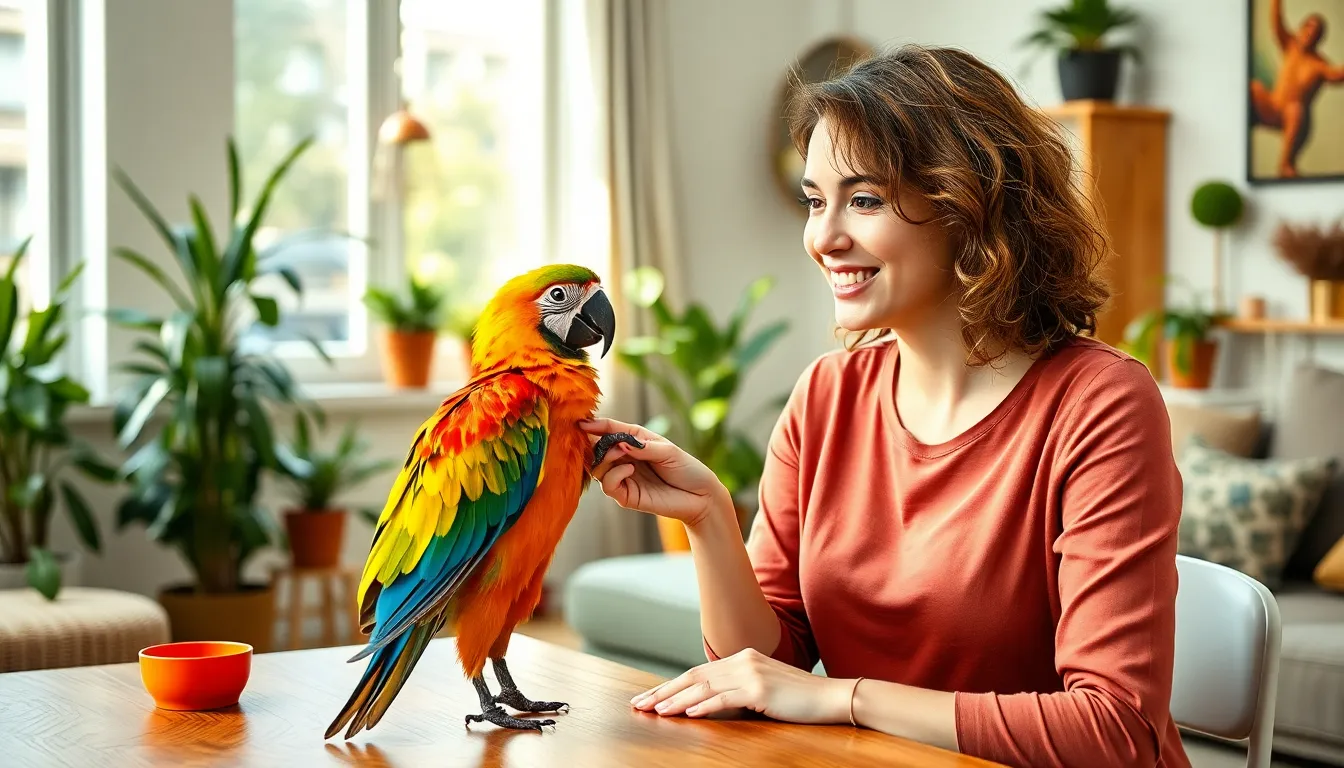
Training your bird pet creates a stronger bond between you and your feathered companion while establishing essential behaviors for daily life. Consistent training sessions transform your bird into a well-adjusted family member who responds positively to interaction and handles various situations with confidence.
Basic Commands and Socialization
Step-up command forms the foundation of bird pet training and teaches your bird to step onto your finger or hand on command. We start by placing our finger near the bird’s lower belly while saying “step up” in a calm voice. Most birds learn this command within 3-5 training sessions when we practice for 10-15 minutes daily.
Target training uses a chopstick or training stick to guide your bird’s movement and attention. Birds touch the target with their beak when we say “touch” and receive immediate praise or small treats. Target training develops focus and creates a communication system between you and your bird pet.
Recall training teaches birds to fly to you when called by name. We begin recall training in a small room with closed doors and gradually expand to larger spaces. Successful recall training requires 2-3 weeks of consistent practice and ensures your bird returns to you during supervised out-of-cage time.
Socialization activities expose your bird pet to different people, sounds, and environments in controlled settings. We introduce new family members gradually and allow visitors to offer treats from a distance. Proper socialization prevents fearfulness and creates confident birds who adapt to household changes.
Daily interaction schedules establish routine training times that birds anticipate and enjoy. Morning sessions work best because birds are naturally more active and receptive to learning. Consistent timing reinforces training progress and strengthens the human-bird bond.
Addressing Behavioral Issues
Screaming behaviors often stem from attention-seeking, boredom, or natural flock calling instincts in bird pets. We address excessive screaming by ignoring attention-seeking calls and rewarding quiet behavior with treats or interaction. Environmental enrichment through foraging toys and puzzle feeders reduces boredom-related screaming.
Biting incidents typically occur when birds feel threatened, territorial, or overstimulated during handling. Understanding bird body language helps us recognize warning signs like pinned eyes, raised feathers, or aggressive posturing. We avoid punishment and instead redirect biting behavior through positive reinforcement training.
Feather plucking indicates stress, medical issues, or environmental problems in bird pets. Common triggers include inadequate diet, poor lighting conditions, or lack of mental stimulation. Veterinary examination rules out medical causes while environmental improvements address behavioral plucking.
Aggression toward family members develops when birds become overly bonded to one person or feel protective of their territory. We rotate handling responsibilities among family members and avoid reinforcing possessive behaviors. Consistent training from multiple people prevents single-person bonding issues.
Destructive behaviors like excessive chewing or cage bar biting require immediate attention and environmental modifications. Providing appropriate chewing materials such as natural wood branches and rotating toys prevents destructive habits. Mental stimulation through training sessions and foraging activities redirects destructive energy into positive behaviors.
Health and Veterinary Care
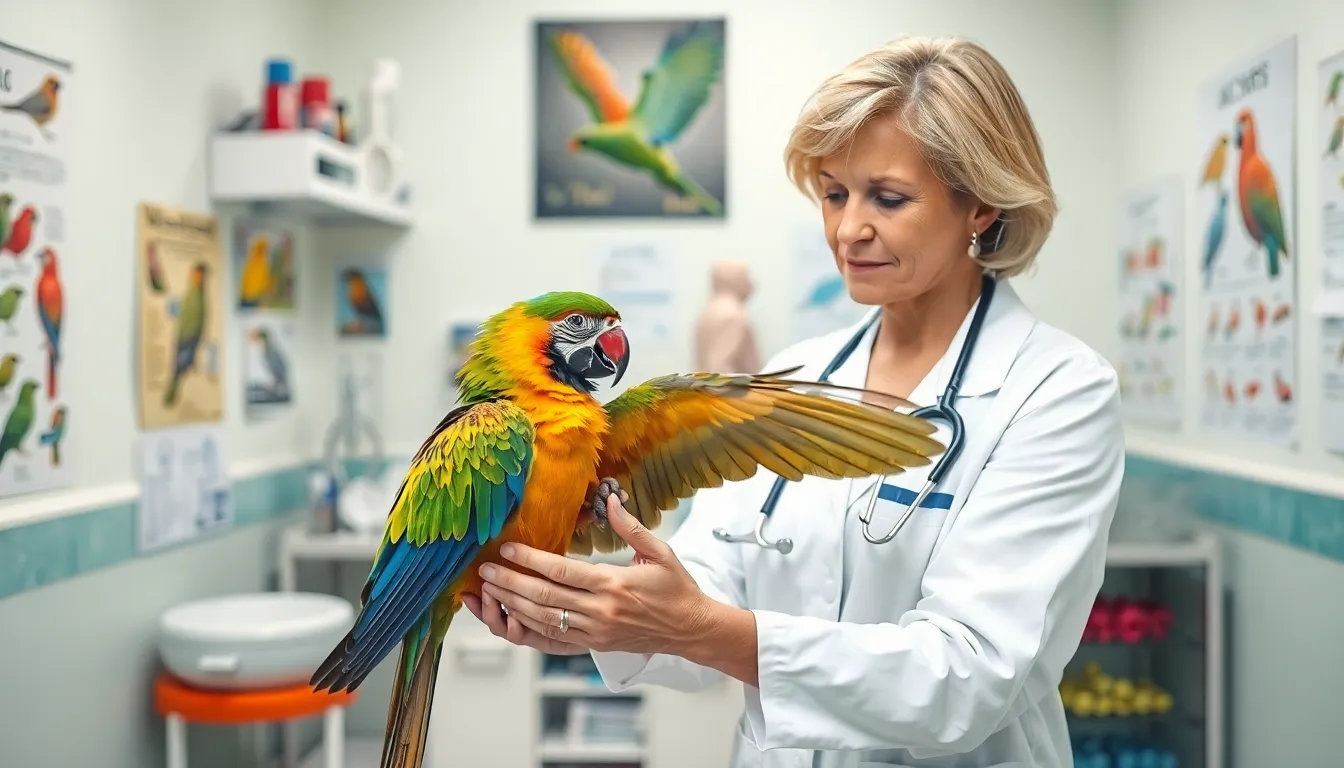
Maintaining our bird’s health requires proactive care and expert veterinary support. Regular health monitoring and professional guidance ensure our feathered companions live long, vibrant lives.
Common Bird Pet Health Problems
Respiratory infections affect birds frequently and manifest through labored breathing, nasal discharge, and tail bobbing movements. These infections often result from poor air quality, temperature fluctuations, or bacterial exposure in the environment.
Feather plucking represents a complex behavioral and medical issue that stems from stress, boredom, nutritional deficiencies, or underlying skin conditions. Birds experiencing this condition create bald patches on their bodies and may damage their flight feathers permanently.
Psittacosis, commonly called parrot fever, occurs when birds contract Chlamydia psittaci bacteria and can transmit to humans through airborne particles. Infected birds display symptoms including lethargy, loss of appetite, and green-colored droppings.
Egg binding affects female birds when eggs become stuck in the reproductive tract and creates a life-threatening emergency requiring immediate veterinary intervention. Contributing factors include inadequate nutrition, lack of exercise, and improper nesting conditions.
| Health Issue | Primary Symptoms | Risk Factors |
|---|---|---|
| Respiratory Infections | Labored breathing, nasal discharge, tail bobbing | Poor air quality, temperature changes |
| Feather Plucking | Bald patches, damaged feathers | Stress, boredom, nutritional deficiencies |
| Psittacosis | Lethargy, appetite loss, green droppings | Bacterial exposure, poor hygiene |
| Egg Binding | Straining, lethargy, abdominal swelling | Inadequate nutrition, lack of exercise |
Nutritional deficiencies cause various health complications including vitamin A deficiency leading to respiratory problems and weakened immune systems. Seeds-only diets particularly contribute to these deficiencies and create long-term health issues.
Finding an Avian Veterinarian
Certified avian veterinarians possess specialized training in bird anatomy, behavior, and medical conditions that general practitioners may not adequately address. These specialists complete additional education through organizations like the Association of Avian Veterinarians.
Location-based searches through the Association of Avian Veterinarians website help identify qualified practitioners within our geographic area. Most metropolitan areas maintain at least one certified avian veterinarian, while rural locations may require longer travel distances.
Emergency preparedness involves establishing relationships with avian veterinarians before health crises occur since birds hide illness symptoms until conditions become severe. Many avian practices maintain after-hours emergency numbers or partnerships with emergency animal hospitals.
Consultation frequency recommendations include annual wellness examinations for healthy adult birds and bi-annual visits for senior birds over 75% of their expected lifespan. New bird acquisitions require initial examinations within 48 hours of bringing them home.
Insurance options specifically designed for exotic pets cover avian veterinary expenses and reduce financial barriers to proper medical care. Companies like Nationwide and VPI offer bird-exact policies with coverage limits ranging from $2,500 to $7,500 annually.
Preparation for veterinary visits involves bringing recent photos of normal droppings, documenting behavioral changes, and transporting birds in secure, well-ventilated carriers. Fasting birds before examinations is typically unnecessary unless exact procedures require it.
Costs of Owning a Bird Pet
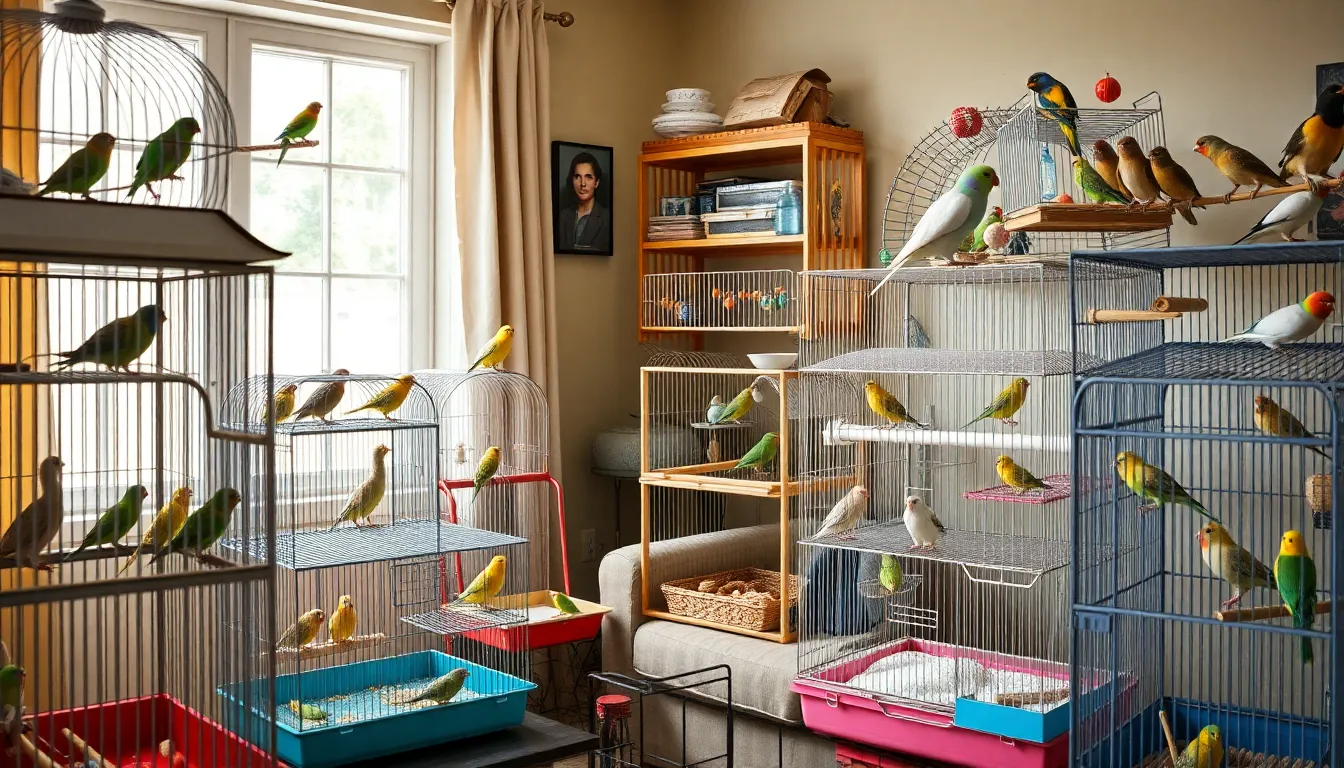
Bird ownership involves important financial commitments that extend beyond the initial purchase price. Initial setup costs range from $200 to $2,000 depending on the species and quality of equipment you select.
Initial Setup Expenses
Cages represent the largest upfront investment for most bird owners. Small bird cages cost $50 to $200 while large parrot cages range from $300 to $1,500. Quality matters significantly since birds spend most of their time inside these enclosures.
Perches add another $20 to $80 to your initial expenses. Natural wood perches cost more than plastic alternatives but provide better foot health for your feathered companion.
Toys and enrichment items cost $30 to $100 initially. Birds destroy toys regularly which means ongoing replacement expenses throughout their lives.
Food and water dishes range from $10 to $50 depending on material and size. Stainless steel options cost more but last longer than plastic alternatives.
Ongoing Monthly Costs
| Expense Category | Small Birds | Medium Birds | Large Birds |
|---|---|---|---|
| Food | $15-25 | $25-40 | $40-80 |
| Toys/Enrichment | $10-20 | $15-30 | $25-50 |
| Bedding/Cleaning | $5-10 | $8-15 | $10-25 |
Food represents the most consistent monthly expense for bird ownership. High quality pellets cost $15 to $80 monthly depending on your bird’s size and dietary requirements. Fresh fruits and vegetables add another $10 to $30 to your monthly grocery bill.
Toy replacement occurs frequently since birds naturally destroy enrichment items. Budget $10 to $50 monthly for new toys and foraging materials to keep your bird mentally stimulated.
Veterinary Care Expenses
Annual wellness examinations cost $75 to $200 at avian veterinary clinics. These visits include basic health assessments and preventive care recommendations.
Emergency veterinary visits range from $200 to $1,500 depending on the severity of your bird’s condition. Common issues like respiratory infections cost $150 to $400 to treat.
Diagnostic testing adds important expenses when health problems arise. Blood work costs $80 to $150 while radiographs range from $100 to $300 per session.
Long Term Financial Planning
Birds live 10 to 80 years depending on their species which creates substantial lifetime financial commitments. Cockatiels cost approximately $15,000 to $25,000 over their 20 year lifespan when including food, veterinary care, and supplies.
Large parrots like African greys can cost $50,000 to $100,000 throughout their 60 year lifespans. These calculations include inflation adjustments and increasing veterinary costs over time.
Pet insurance helps manage unexpected veterinary expenses but costs $10 to $50 monthly depending on coverage levels and your bird’s species.
Cost Saving Strategies
Buying supplies in bulk reduces monthly feeding expenses by 15 to 30 percent. Large bags of pellets offer better value than smaller packages.
Creating homemade toys from safe materials cuts enrichment costs significantly. Paper towel rolls, untreated wood blocks, and cardboard boxes provide inexpensive entertainment options.
Establishing relationships with avian veterinarians before emergencies arise helps you find affordable care options in your area. Some clinics offer wellness plans that spread annual costs across monthly payments.
Legal Considerations and Bird Ownership
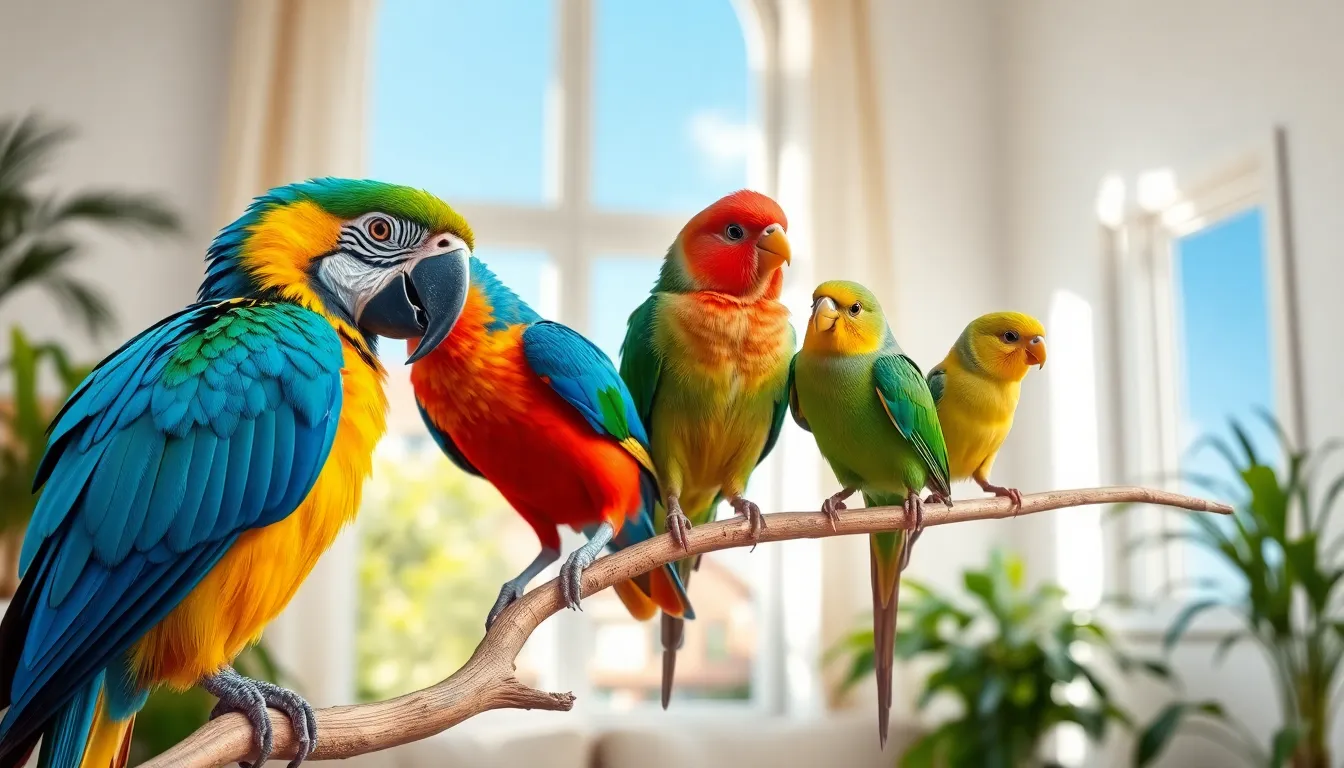
Legal regulations vary significantly across different locations when it comes to bird ownership. Federal laws protect migratory birds through the Migratory Bird Treaty Act, which makes it illegal to capture, possess, or sell most wild bird species native to North America.
State and local ordinances often impose additional restrictions on exotic bird ownership. Cities like New York and Chicago have exact regulations about which bird species residents can legally keep as pets. Some municipalities limit the number of birds per household or require special permits for certain species.
Protected Species and CITES Regulations
International trade in endangered bird species falls under the Convention on International Trade in Endangered Species (CITES). Many parrot species require CITES permits for legal purchase and transport across state or national borders. African grey parrots, hyacinth macaws, and many cockatoo species carry exact documentation requirements.
Purchasing birds from licensed breeders ensures compliance with these international regulations. Reputable breeders provide proper documentation including health certificates, breeding records, and CITES permits when applicable.
Housing and Noise Ordinances
Apartment dwellers face unique challenges with bird ownership due to noise restrictions in lease agreements. Most residential leases include quiet enjoyment clauses that can affect bird owners if their pets create excessive noise complaints from neighbors.
Local noise ordinances typically measure sound levels in decibels, with residential limits ranging from 45-55 decibels during evening hours. Larger parrot species like macaws and cockatoos can produce sounds exceeding 100 decibels, potentially violating these regulations.
| Bird Species | Average Decibel Level | Peak Noise Level |
|---|---|---|
| Budgerigar | 65-70 dB | 85 dB |
| Cockatiel | 75-80 dB | 95 dB |
| Conure | 90-100 dB | 120 dB |
| Macaw | 100-110 dB | 130 dB |
Liability and Insurance Coverage
Bird ownership creates potential liability issues that standard homeowner’s or renter’s insurance policies may not cover. Birds can cause property damage through destructive behaviors or accidentally injure visitors through bites or scratches.
Specialized exotic pet insurance policies cover veterinary expenses and liability claims related to bird ownership. These policies typically cost $10-30 monthly and provide coverage ranging from $5,000-25,000 for medical emergencies and property damage claims.
Travel and Transportation Laws
Interstate bird transport requires health certificates issued by licensed veterinarians within 30 days of travel. Airlines have exact regulations for in-cabin and cargo transport of birds, including approved carrier dimensions and documentation requirements.
Quarantine laws affect birds entering different states, with some requiring 30-day isolation periods. Hawaii maintains particularly strict import regulations due to concerns about invasive species and disease transmission.
Breeding and Sale Regulations
Commercial bird breeding operations require business licenses and may need to comply with USDA Animal Welfare Act regulations. States like California and Florida have exact licensing requirements for anyone selling more than 20 birds annually.
Bird breeders must maintain detailed records of breeding pairs, offspring, and sales transactions. These records help track bird lineage and ensure compliance with endangered species regulations.
Emergency Planning and Legal Responsibilities
Pet owners have legal obligations to provide adequate care during emergencies and natural disasters. Many jurisdictions consider animal abandonment or neglect during evacuations as criminal offenses punishable by fines or imprisonment.
Emergency preparedness includes identifying bird-friendly evacuation shelters and maintaining portable carriers with proper ventilation. Some areas require pet registration with emergency services to ensure rescue teams can locate and assist animals during disasters.
Conclusion
Bringing a feathered companion into your life opens doors to decades of meaningful friendship and daily wonder. We’ve explored everything from choosing the right species to managing costs and legal requirements—each element crucial for success.
The journey ahead requires dedication but rewards you with an intelligent social companion who’ll bring laughter and joy to your home. With proper preparation and commitment you’re ready to build a lasting bond that’ll enrich both your lives.
Your new feathered friend is waiting to become part of your family story.
Frequently Asked Questions
What are the main benefits of owning a bird as a pet?
Birds offer exceptional companionship through their intelligence and ability to bond with owners. They’re ideal for apartment living due to minimal space requirements, thriving in vertical environments. Their playful personalities provide entertainment and stress relief. Many species live 15-80 years, allowing for lasting relationships. Birds are also relatively low maintenance compared to traditional pets.
Which bird species are best for beginners?
Small birds like budgerigars, cockatiels, canaries, and lovebirds are excellent for beginners. These species are manageable in size, have friendly temperaments, and require less complex care. Cockatiels are particularly recommended for their social nature and ability to learn simple tricks, while budgies are affordable and easy to care for.
What are the essential care requirements for pet birds?
Birds need three fundamental elements: proper housing with adequate cage size and bar spacing, balanced nutrition including high-quality pellets and fresh vegetables, and daily exercise with mental stimulation. Regular veterinary care from an avian specialist, social interaction, and environmental enrichment through toys and foraging activities are also crucial for their wellbeing.
How much does it cost to own a bird?
Initial setup costs range from $200-$2,000, with cages being the largest expense. Monthly costs include food ($20-50), toys ($10-30), and veterinary care ($50-200). Long-term expenses can be significant since birds live 10-80 years depending on species. Budget for emergency veterinary visits and consider pet insurance for comprehensive coverage.
What legal considerations should I know about bird ownership?
Bird ownership regulations vary by location. Federal laws protect migratory birds, while state and local ordinances may restrict exotic species. CITES regulations apply to endangered species. Apartment dwellers must consider noise ordinances, and liability insurance is recommended. Check breeding, sale, and transportation laws in your area before acquiring a bird.
How do I train my bird and address behavioral issues?
Start with basic commands like “step-up” and target training using positive reinforcement. Establish daily interaction schedules and focus on socialization to prevent fearfulness. Common issues like screaming, biting, and feather plucking can be addressed through environmental enrichment, consistent training, and understanding bird body language. Patience and consistency are key to successful training.
What health problems should I watch for in birds?
Common health issues include respiratory infections, feather plucking, psittacosis, and egg binding in females. Watch for symptoms like difficulty breathing, changes in appetite, unusual discharge, or behavioral changes. Establish a relationship with a certified avian veterinarian before health crises arise and schedule regular check-ups to maintain your bird’s health.

